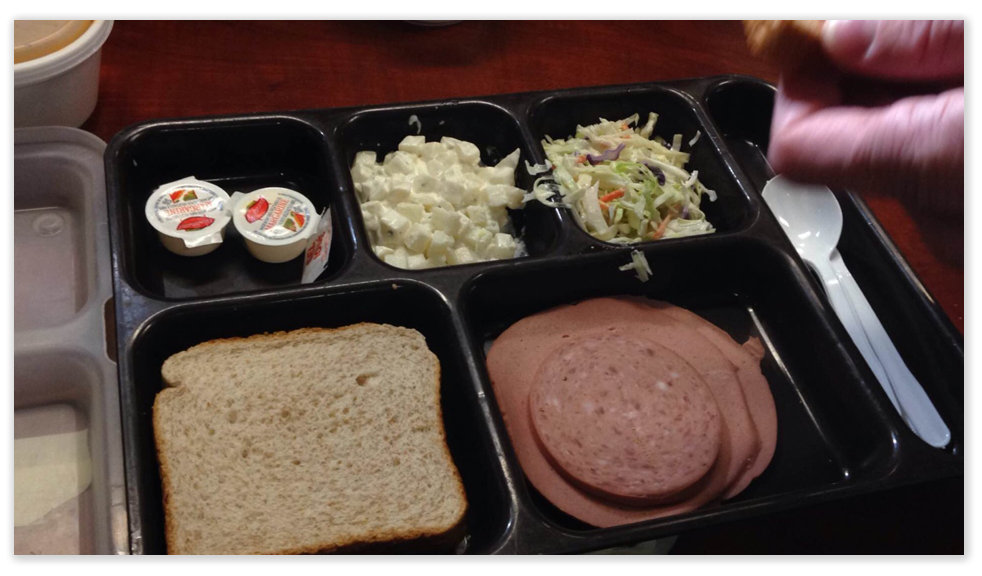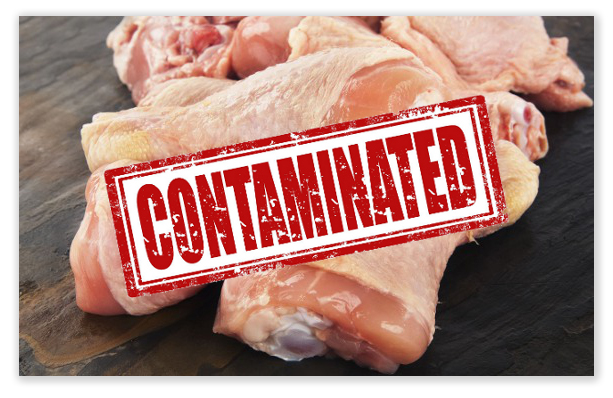We post news and comment on federal criminal justice issues, focused primarily on trial and post-conviction matters, legislative initiatives, and sentencing issues.
DOG BITES MAN: REPORT SAYS PRISON FOOD SUCKS
Prison and jail have famously been described as “three hots and a cot.” But the “hots” may not be quite as hot as you would think. In fact, you’ll be shocked to learn that prison food is lousy, at least according to a lengthy investigative article in The Atlantic.
What could be next? Perhaps an exposé revealing that pro wrestling is fixed?
The magazine reported that new evidence suggests that the prison food situation is “worse than previously thought, and not just because prison food isn’t winning any James Beard awards. It’s also making inmates sick.”

The Centers for Disease Control and Prevention (CDC) found that inmates are 6.4 times more likely to suffer from a food-related illness than the general public. The report found that inmates suffer from foodborne illness at a rate of 45 per 100,000 people annually, compared to only 7 per 100,000 in the general population. And 6% of all confirmed outbreak-related cases of foodborne illness in the US took place in prisons and jails, despite the fact that less than 1% of the population is incarcerated. At the same time, “desmoteric” outbreaks—the kind that occur in correctional institutions—were the country’s largest outbreaks in four of the 17 years studied. (In six other years, correctional outbreaks ranked within the top five.) Thirty-seven states reported at least one desmoteric outbreak during the same span.
 The agency found that tainted poultry products were the most common single culprit. However, as Mariel A. Marlow, one of the study’s coauthors, observed, “Oversight and regulation of correctional institutions can vary by state and institution, so just to pull out certain factors is a little difficult,” she said. But the widespread nature of the problem suggests “mundane roots, even if the consequences can be dramatic. Institutions struggle to enforce basic food-safety standards: Though there are reports of corruption, negligence, and poor or nonexistent training of the inmate workers, the primary factor appears to be that many correctional facilities aren’t equipped to execute the food-handling protocols observed in restaurants and corporate cafeterias. And when mistakes are made, there are inconsistent processes in place to ensure improvement.
The agency found that tainted poultry products were the most common single culprit. However, as Mariel A. Marlow, one of the study’s coauthors, observed, “Oversight and regulation of correctional institutions can vary by state and institution, so just to pull out certain factors is a little difficult,” she said. But the widespread nature of the problem suggests “mundane roots, even if the consequences can be dramatic. Institutions struggle to enforce basic food-safety standards: Though there are reports of corruption, negligence, and poor or nonexistent training of the inmate workers, the primary factor appears to be that many correctional facilities aren’t equipped to execute the food-handling protocols observed in restaurants and corporate cafeterias. And when mistakes are made, there are inconsistent processes in place to ensure improvement.
The Atlantic, Prison Food Is Making U.S. Inmates Disproportionately Sick
(Dec. 27, 2017)
– Thomas L. Root

